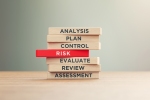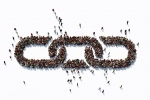September 27, 2013
Prepare, Practice, Test. Repeat.
 September is National Disaster Preparedness Month. Episcopal Relief & Development’s US Disaster Program equips Episcopal dioceses in the United States to prepare for local disasters, mitigate their impact and help the vulnerable make a full and sustained recovery. This is the fourth in a series of four posts on parish disaster preparedness planning. Click here for links to the first three articles.
September is National Disaster Preparedness Month. Episcopal Relief & Development’s US Disaster Program equips Episcopal dioceses in the United States to prepare for local disasters, mitigate their impact and help the vulnerable make a full and sustained recovery. This is the fourth in a series of four posts on parish disaster preparedness planning. Click here for links to the first three articles.
It was 3:00 in the afternoon. A massive earthquake had struck the San Francisco neighborhood where St. Aidan’s Episcopal Church is located. Afternoon meetings and programs were in session.
St Aidan’s rector, Tommy Dillon, and several church members were being put to the test. How was the church to respond? How were they to protect the people in the building?
Luckily it was a simulation. And the first steps involved sitting in a room with staff, parishioners, and a facilitator to talk through how the parish would implement components of its disaster plan.
Then the group walked through the parish buildings with an eye toward how to keep it secure in a disaster, from noting where to locate the water shut-off values to discovering where the flashlights are kept.
This is the kind of activity that makes a congregation’s disaster plan a living, practical strategy during a disaster and not a filed-and-forgotten document. Testing a plan regularly under various scenarios ensures that information is up-to-date and that congregational leaders have internalized the first steps of response.
St. Aidan’s developed its first disaster plan six years ago, and it has been testing it, expanding it, and revising it ever since. The congregation is a member of the Diamond Heights Disaster Ready Workgroup, which designed and implemented a community disaster preparedness strategy. St. Aidan’s is currently completing Episcopal Relief & Development’s comprehensive version of the Preparedness Planning Guide for Congregations and Parishes.
In the earthquake scenario, the congregation tested its knowledge of its “incident command system,” which organizes people’s decision-making roles in disaster response. In the future, St. Aidan’s hopes to test some of the disaster response strategies it has developed with community partners and local churches, which would reach out to vulnerable community members affected by a disaster.
In the end, the goal isn’t simply to have a plan on paper. Preparedness involves cultivating the relationships, resources, and good will that empower a congregation to care for its members and its neighbors after a disaster.
An effective preparedness strategy includes the following characteristics:
- It is informed by the congregation’s knowledge and experience. Cookie cutter protocols won’t tell you where to look for evacuated parishioners, where to find the shut-off valve for the water pipes, or which parishioners are able to provide quick meals or do CPR.
- It can serve for multiple kinds of disasters. In the chaos of a crisis, trying to locate the rubric for a specific disaster isn’t really possible. And what if you’re experiencing a crisis that you hadn’t anticipated? Better to have a more flexible means of response that acknowledges who needs to be contacted, what information is important to discover and to convey, what needs to be protected, and what can be mobilized to help a community recover.
- It’s simple enough that congregational leaders and members can internalize the steps necessary to get them through the first few days of a disaster.
- It’s updated regularly to capture information that changes regularly: staff and membership rosters, addresses, emails and phone numbers, needs, and skills.
- The systems it uses can be updated as part of the normal life of the church. For example, drills on disaster preparedness are woven into other community building activities. Or surveys to update members’ contact information include questions on members’ potential needs and abilities to respond to a crisis.
Tommy Dillon has big preparedness plans, not just for his own congregation, but for congregations throughout the Episcopal Diocese of California where he is the diocese’s disaster coordinator. The Diocesan Disaster Committee is putting forth a resolution at the diocesan convention in October for all congregations to develop disaster response plans by October of 2014. The team would support them in the effort, using St. Aidan’s as a model.
The Diocese of California is not alone in its desire to ensure that congregations are not only able to protect their own assets during a disaster, but are ready to help their vulnerable neighbors recover. Since 2011, Episcopal Relief & Development’s US Disaster Program has trained diocesan disaster coordinators and team members from more than 75 Episcopal dioceses throughout the United States. A complete list of diocesan disaster coordinators can be found at www.episcopalrelief.org/usdisasterprogram.
The US Disaster Program aims to inspire, connect and equip leaders of the US Episcopal Church to prepare for hazards that might affect their communities, as well as mitigate the impact of those disasters and help the vulnerable make a full and sustained recovery. More stories of best practices in disaster preparedness and response, along with planning resources and curricula, can be found in our resource library at www.episcopalrelief/org/resourcelibrary.





